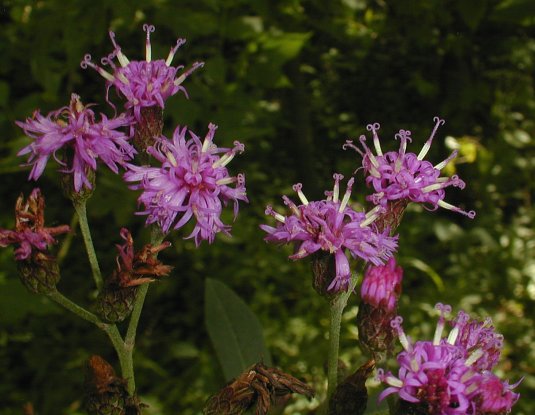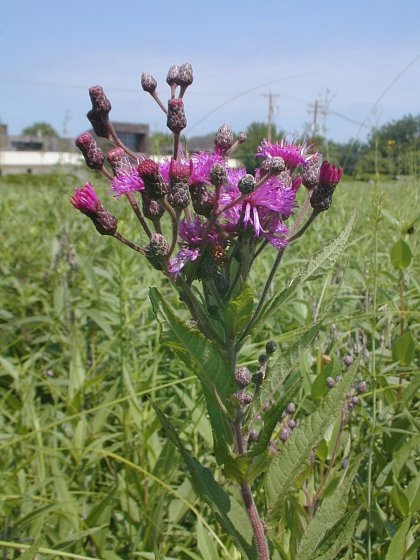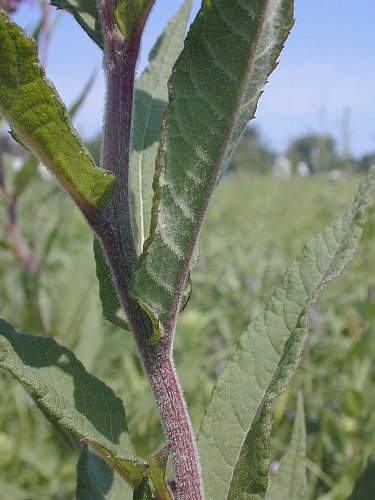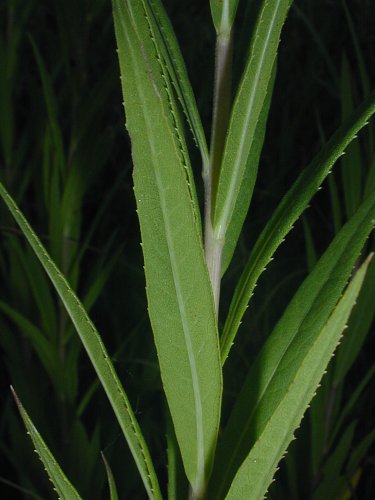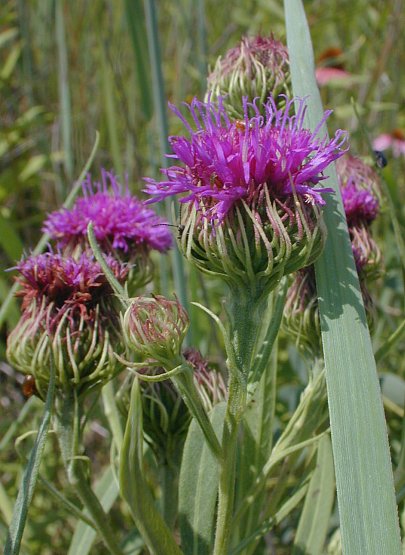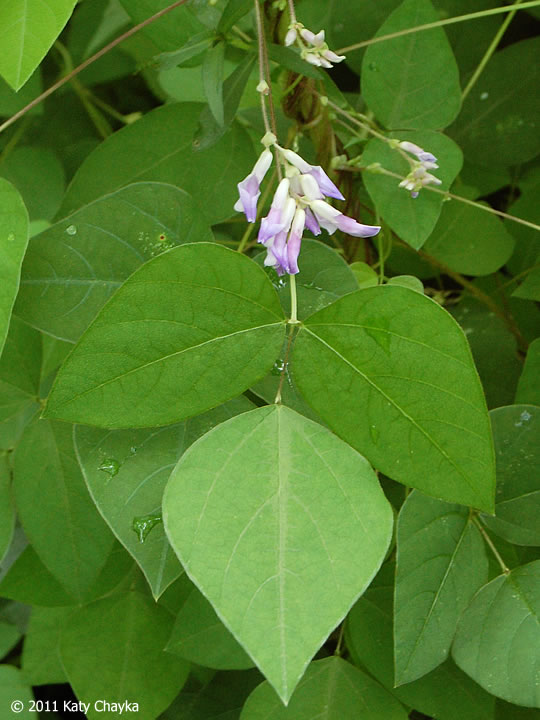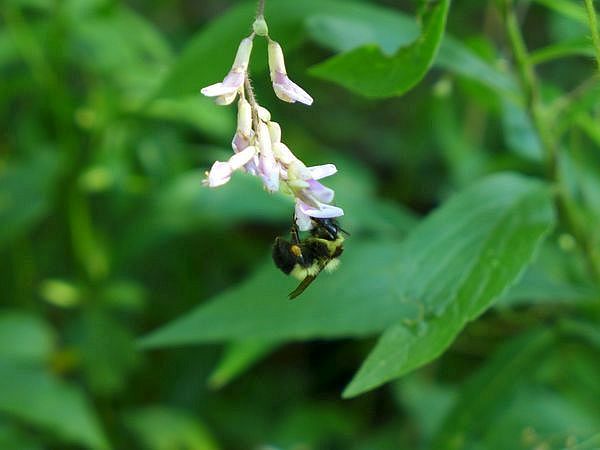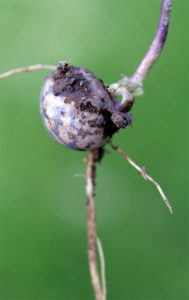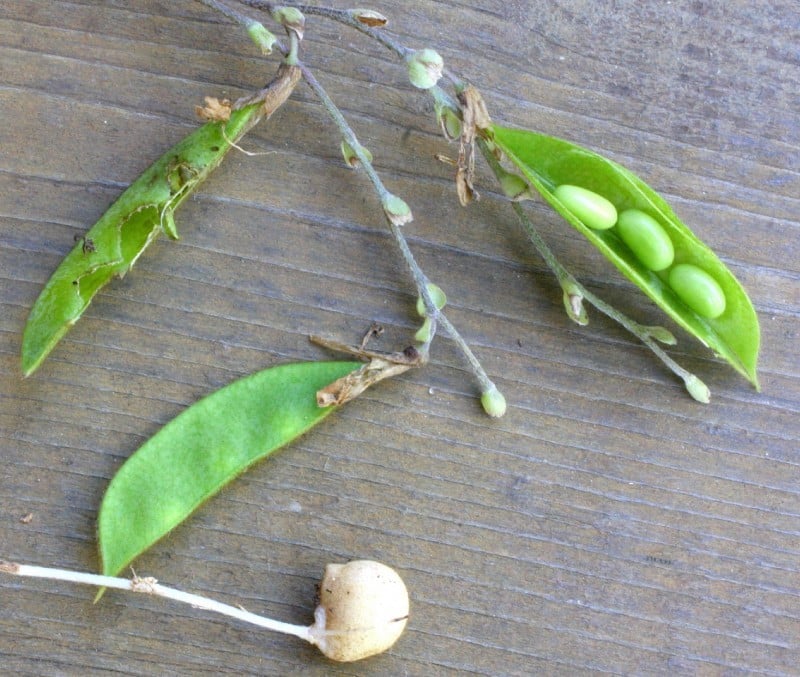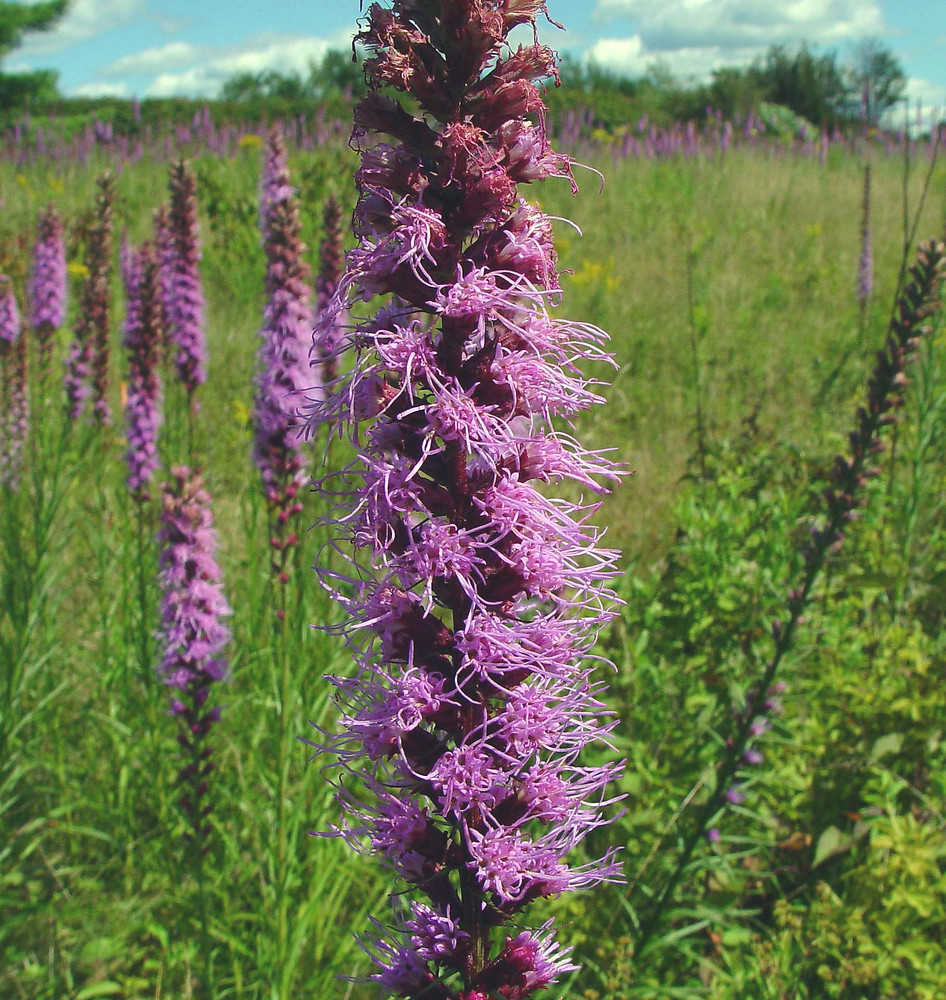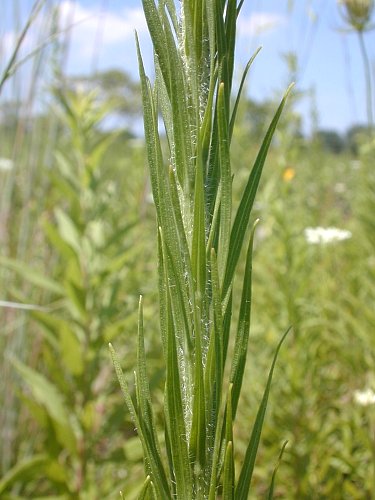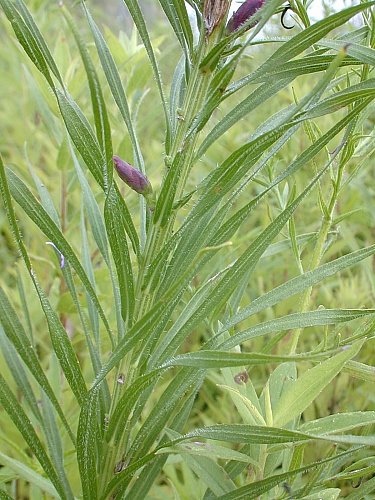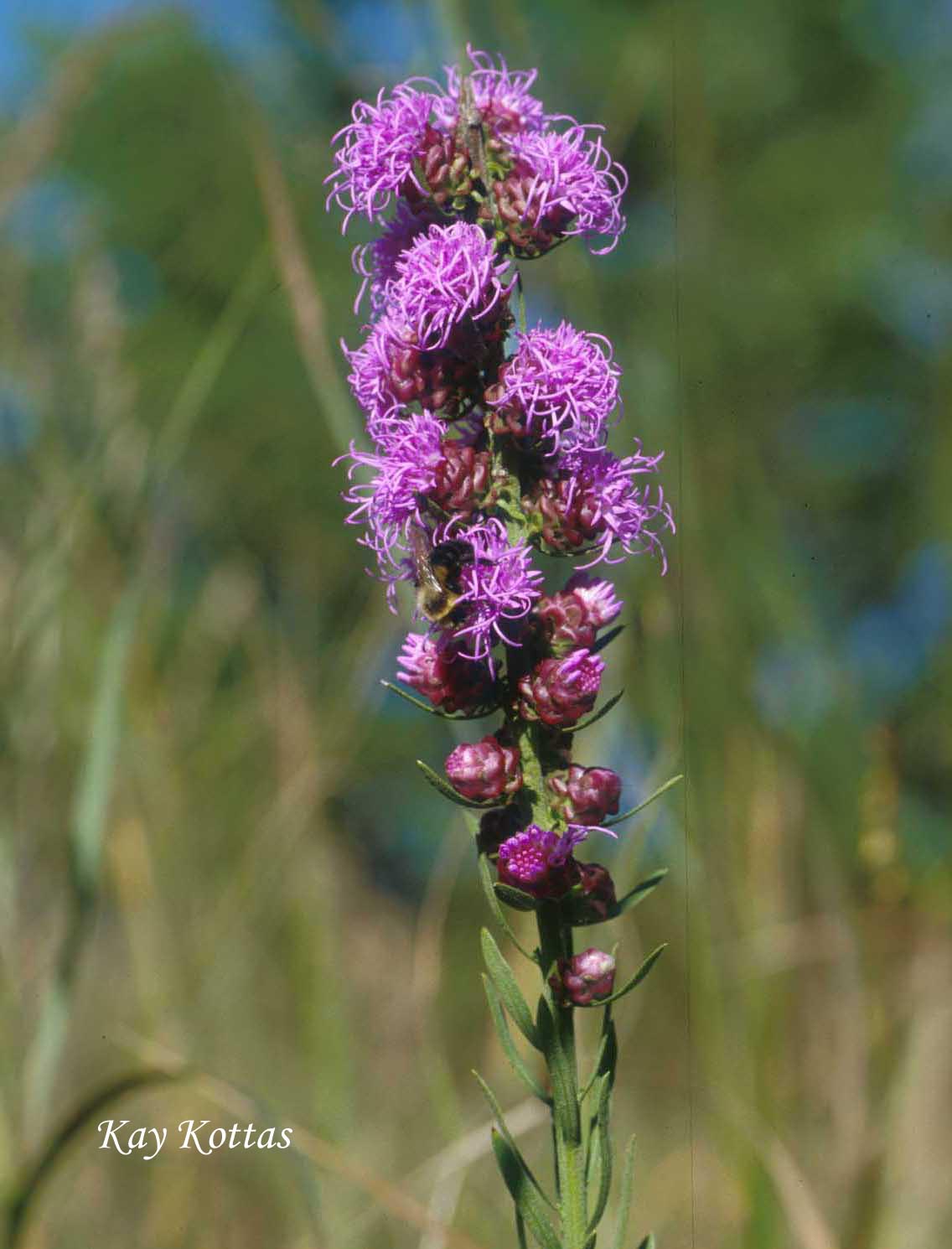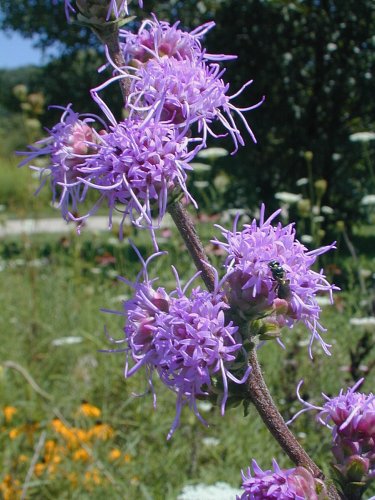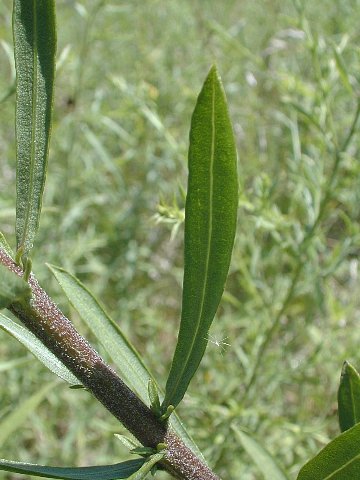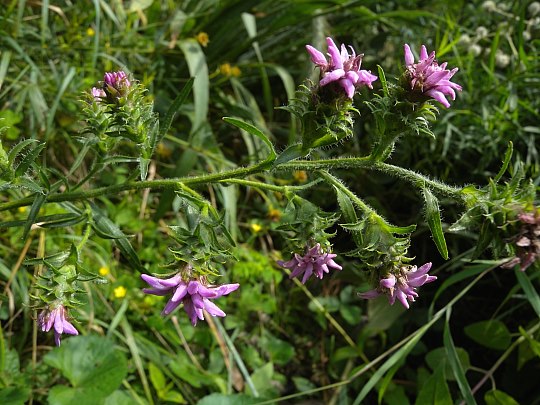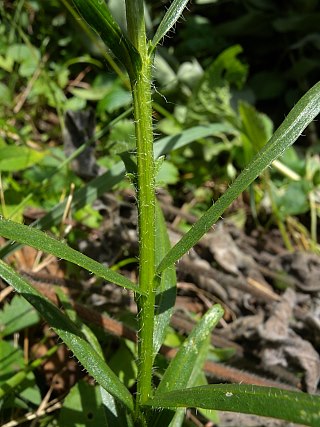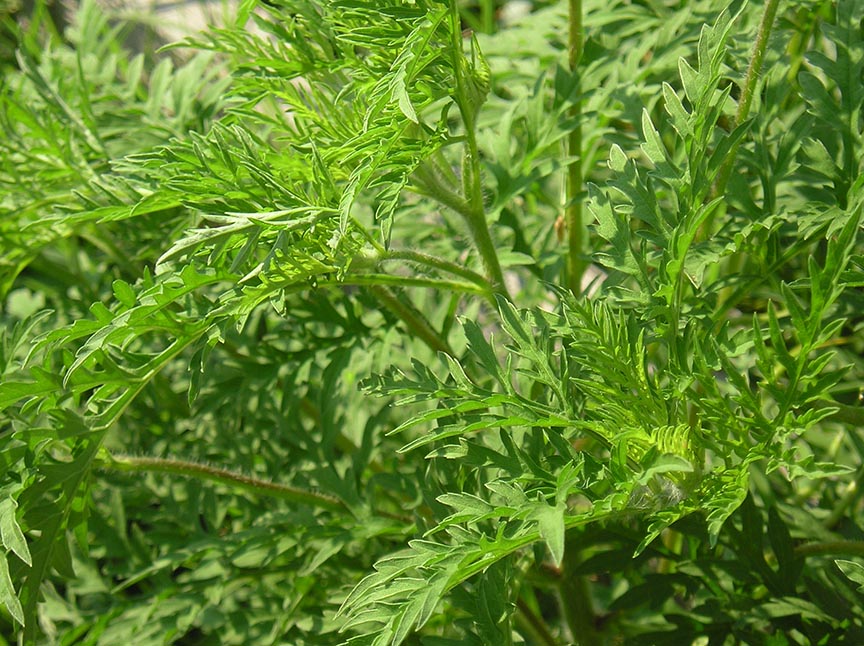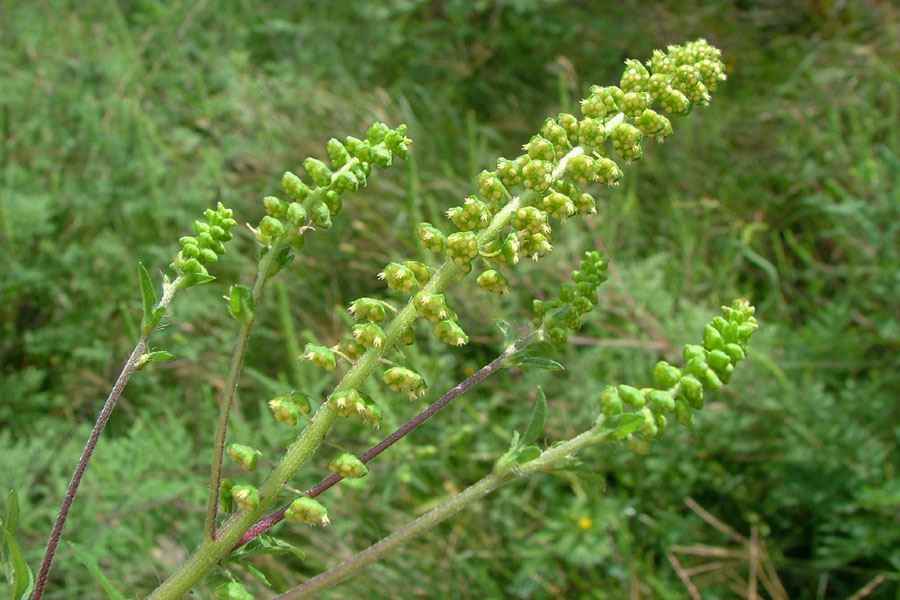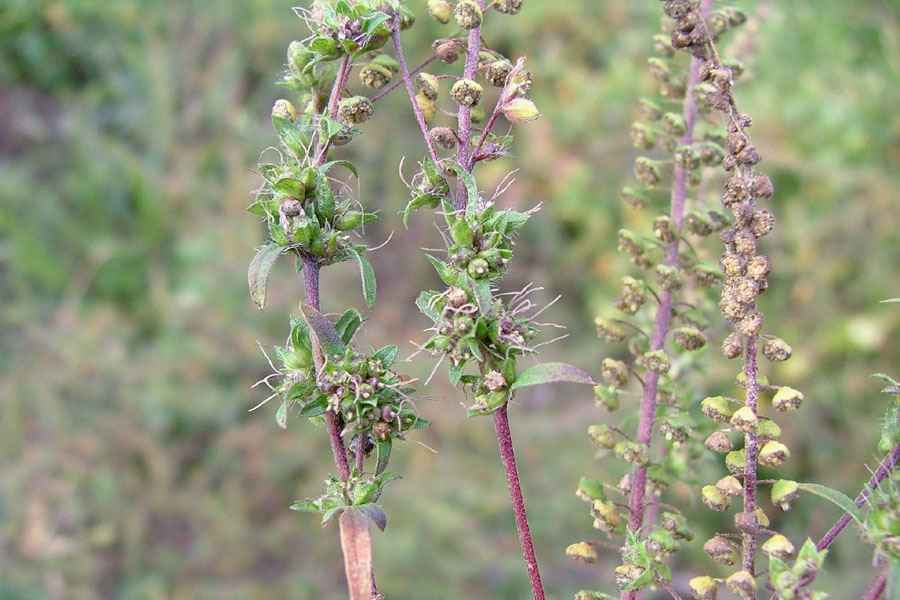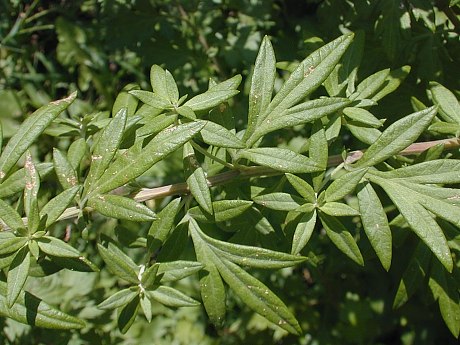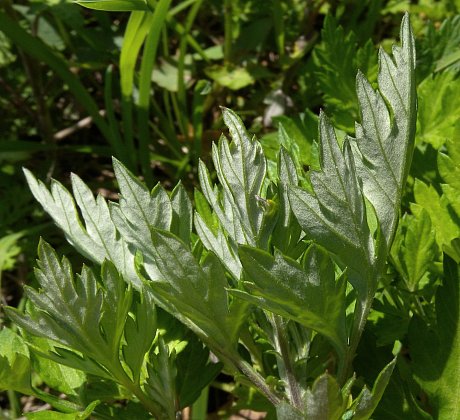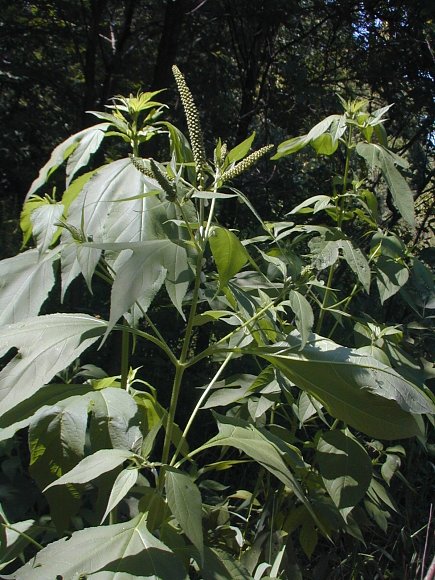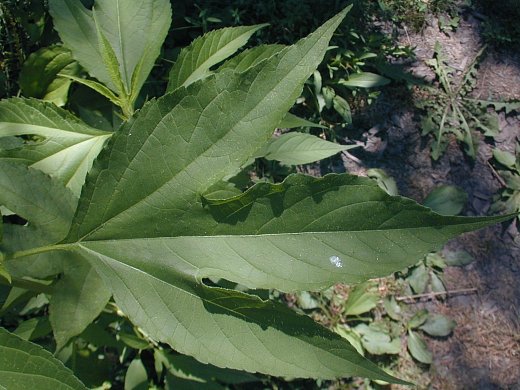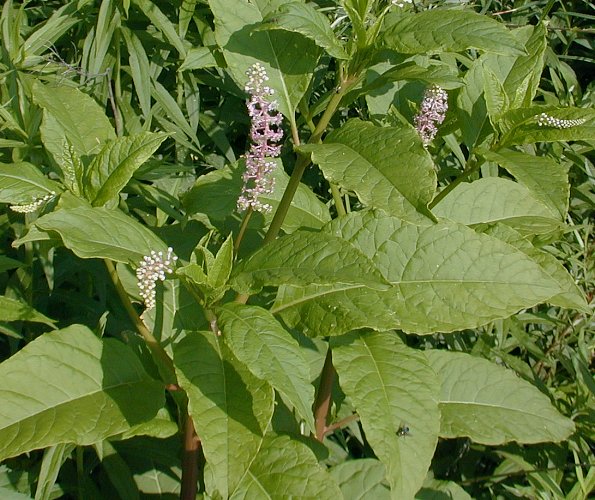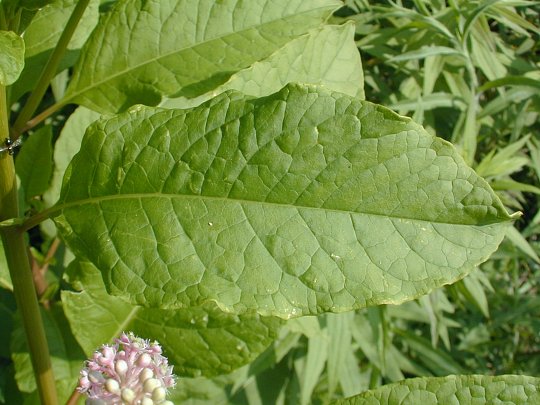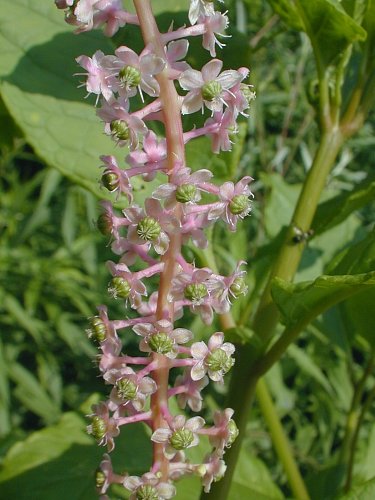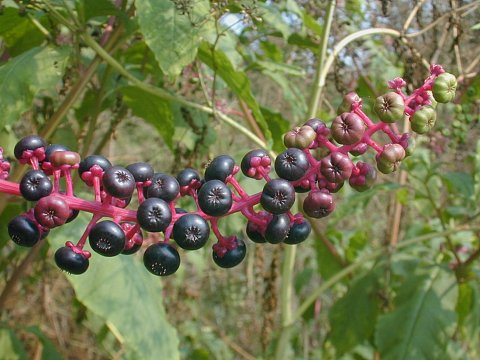Jewelweed: Ohio's Humblest Gem!
Hello and Happy Monday to all our Wonderful Wildflower Enthusiasts of Cuyahoga Valley! This week let’s talk about Jewelweeds (also known as Touch-me-nots)! Jewelweed is a very popular plant among Herbalists, Ethnobotanists, and lovers of medicinal plants alike. For this reason, I would like to preface this feature by reminding us that Cuyahoga Valley National Park is a park for everybody to enjoy. The natural life within it is our responsibility to protect and share with one another. Doing this successfully means that we are not permitted to take natural resources out of the park.
Please know that there are PLENTY of online stores where you can buy Jewelweed seeds. You can find them by Googling “jewelweed seeds for sale”. Just remember to check for scientific names and remember to BUY NATIVE! Ohio’s native Jewelweeds include common jewelweed (Impatiens capensis, also called Spotted Jewelweed) and pale jewelweed (Impatiens pallida). If you are looking to add jewelweed to your home garden, I would get on buying those seeds ASAP because jewelweed seeds do best when they are planted in the early fall.
Now, back to the plants!
Jewelweed is an herbaceous annual that typically reaches a maximum height of 2-5’ tall. When it is well-established, you might even mistake it for a shrub! Here are some notable characteristics to reference next time you think you’ve spotted jewelweed in CVNP:
Stem:
Jewelweed has a hairless (or, glabrous) stem that contains a sap (Note: plant guides describe a sap-containing stem as succulent). This sap, which also runs through jewelweed leaves, is often harvested as an antidote for poison ivy and stinging nettle. Jewelweed stems are thin, often shiny, and can be green to pale reddish green in color.
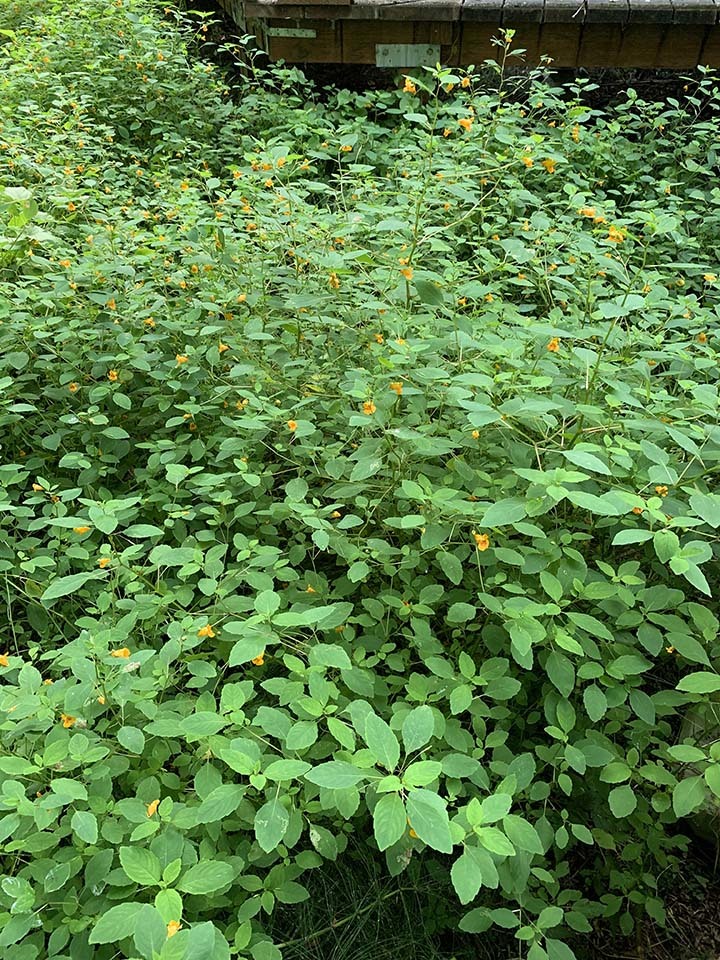
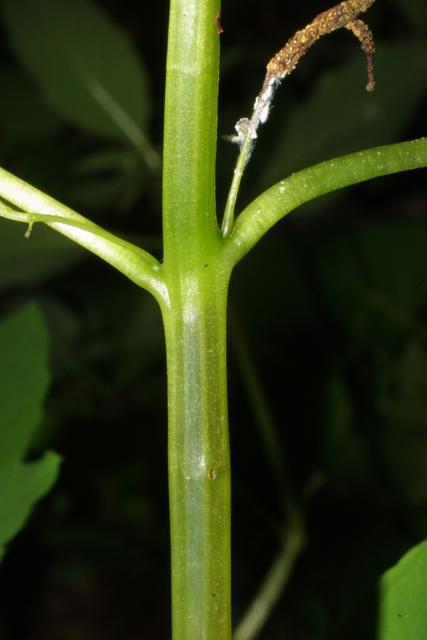

Left: Jewelweed as shrub-like growth (courtesy Washington State's NWCB). Middle: green-colored Stem (courtesy Steve Baskauf). Right: reddish green stem (courtesy Dawn Dentzer).
Leaves:
Jewelweed leaves are alternately arranged on its stem. Its leaves are egg shaped and coarsely toothed, meaning its edges are serrate and each tooth is rather large (as opposed to a finely toothed leaf). The upper surface of jewelweed leaves is often dull and smooth. Jewelweed leaves, along with other plants of the Impatiens genera, are waterproof. You’ll notice this by the way rain droplets and morning dew forms beads on the leaf’s surface. Additionally, tiny air bubbles are trapped just beneath the leaf’s surface, giving them a silvery sheen that is most noticeable when wet. Some accredit the Jewelweed name to this silvery sheen. Others say it comes from the plant’s seed, which we will talk about next!
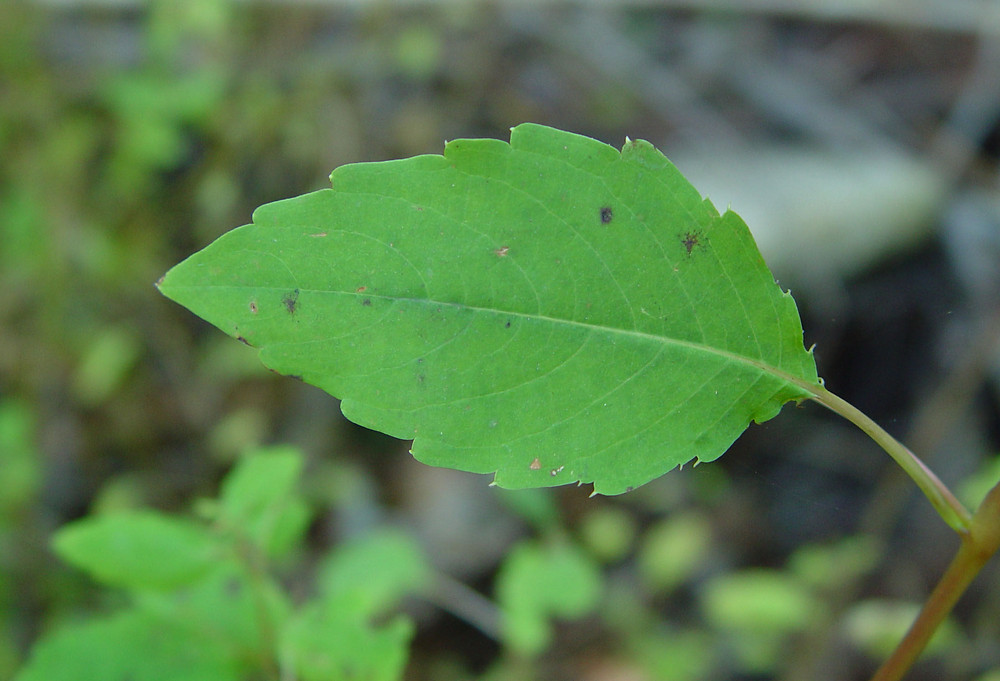

Left: leaf shape (Arthur Haines). Right: water beading on waterproof leaves (Marie Read).
Fruit:
The jewelweed fruit is an elongated capsule (about ½-1” long) that resembles a swollen green bean. When it has grown to full size, it will burst at the slightest touch, hence its other common name, touch-me-not. Fresh seeds are green and resemble a plump sunflower seed. Over time, the green seed becomes black in color. However, when the seed’s thin outer layer is gently peeled or scraped away, a beautiful light turquoise seed is revealed, often referred to as the “jewel” of the jewelweed plant. If you choose to examine the seeds in this manner, please remember to leave them in the park!
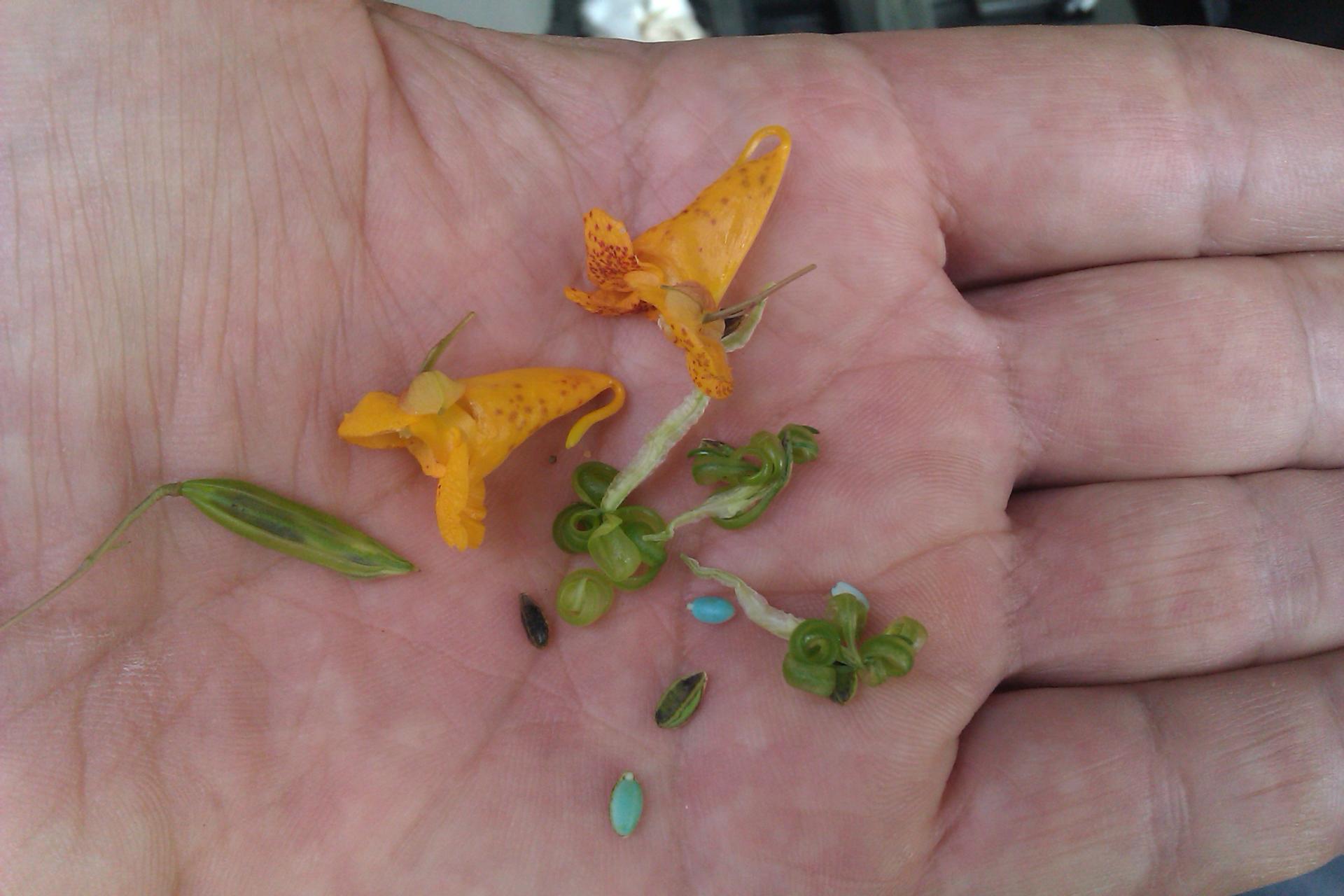
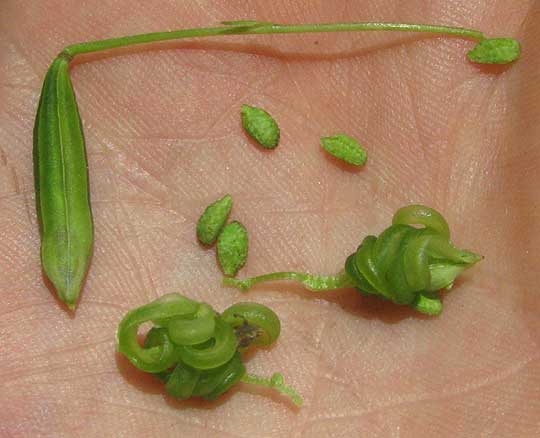
Left: Seed pods, common jewelweed flowers, burst seed pods, black seeds, blue seeds, and one green seed (Russ Cohen). Right: Seed pods, green seeds, and burst seed pod (courtesy Jim Conrad's Naturalist Newsletter).
Flowers:
Jewelweed flowers hang on stalks attached to the top of plant stems. Its flowers are tubular and shaped like a cornucopia with a spur that produces nectar. This nectar is desired by pollinators, like hummingbirds, bees, and less commonly, butterflies. Common jewelweed (Impatiens capensis) has orange flowers with reddish spots, while pale jewelweed (Impatiens pallida) flowers are mostly yellow and have fewer spots that are orange. The spur on common jewelweed curves beneath the flower so that it is about parallel with the flower. The spur on pale jewelweed is usually curved less so that its spur is roughly perpendicular to the flower.
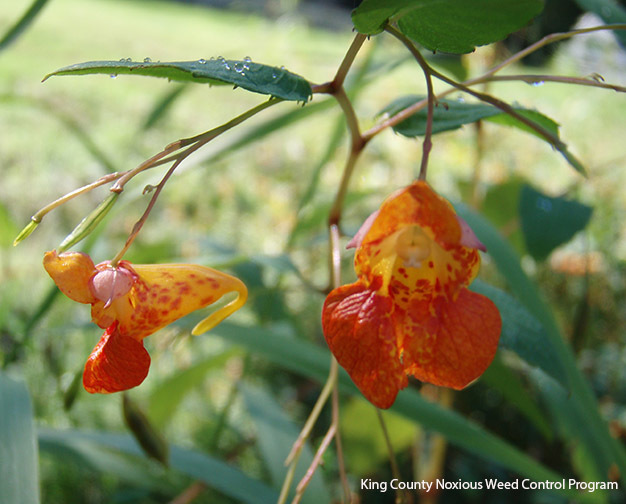


Left: Common jewelweed flower and spur (courtesy Washington State's NWCB). Middle: Pale jewelweed flower (G.D. Bebeau). Right: Pale jewelweed spur (G. D. Bebeau).
Habitat preference:
Both common and pale jewelweed prefer to grow in shaded areas but will sometimes tolerate partial sun. They prefer wet soils and can be found in wet forests and on the edges of wetlands, swamps, marshes, stream banks, and even in ditches. While common jewelweed is found almost exclusively in wetter soils, pale jewelweed can sometimes thrive in soils that are slightly drier.
Hopefully, you’ll find this feature helpful this week while you’re hunting for jewelweed observations! If you would like to learn more, Kent Karriker with the US Forest Service wrote an excellent article on jewelweed: https://www.fs.fed.us/wildflowers/plant-of-the-week/impatiens_capensis.shtml




